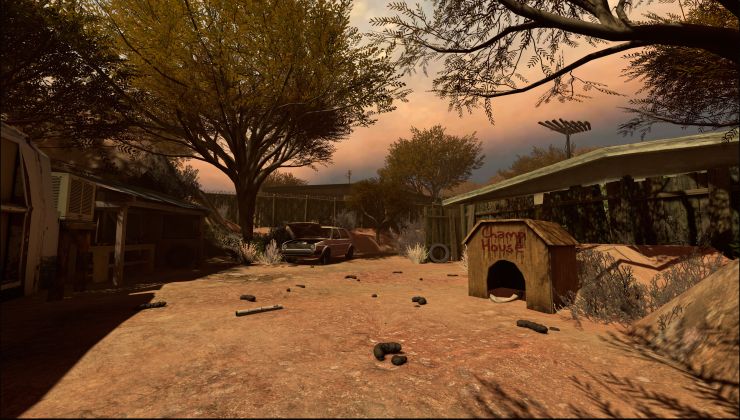Starting with Linux kernel 6.7, users of the AMDGPU driver are not be able to set power limits below the recommended values advised by the AMD Engineering team on the hardware itself. The new low-power limits are intentionally enforced and set based on each card vBIOS specification.
While before the recent 6.7 kernel release the maximum power limit was on-par with what is specified at the vBIOS, but the driver didn't enforce any lower power limits, making the driver really good for fine-tuning it for power saving purposes. However, setting lower power limits that didn't match with what is specified at the vBIOS might harm the GPU as stated on the bug report that lead to this implementation:
This has been discussed on the amd-gfx M/L, and the conclusion was that under-powering outside of the bounding box is potentially dangerous and might damage the hardware. This won't be added back in.
And from the amd-gfx mail list:
The change aligns the driver what has been validated on each board design. Windows uses the same limits. Using values lower than the validated range can lead to undefined behavior and could potentially damage your hardware.
The other interesting information extracted from that mail list discussion is that the AMDGPU Linux driver will basically work the same way as the Windows driver, obeying the values stated at vBIOS level.
Opinion: While the changes seem frustrating at first glance for those who want some extra power saving features for computers running on idle, this is an open source driver and it will likely not take long for third party repositories (aur, ppa, copr) to distribute unpatched versions of this module. This already happened in the past with ZFS, NVIDIA, etc. Although, as mentioned, you run the risk of hardware damage if you do decide to use any that pop up.
I don't like this kind of overbearing handholding. It's fine to have the driver adhere to the board manufacturers specifications, it's another thing to block functionality and outright refuse to entertain the option. That's not cool.
Because people are upset over this regression and feature limitation, a patch has been created to restore it by user fililip in [Gitlab issue 3183](https://gitlab.freedesktop.org/drm/amd/-/issues/3183)
This is a bit of unfortunate nonsense, if users want to break their hardware then they should be able to. Not that lowering power limit actually does that but whatever.
I don't like this kind of overbearing handholding. It's fine to have the driver adhere to the board manufacturers specifications, it's another thing to block functionality and outright refuse to entertain the option. That's not cool.
Because people are upset over this regression and feature limitation, a patch has been created to restore it by user fililip in [Gitlab issue 3183](https://gitlab.freedesktop.org/drm/amd/-/issues/3183)
While I agree with your point that customers ultimately should OWN the hardware in all levels, most of amdgpu developers are AMD Engineers, and they seem to be defending the company against any hardware damage that might lead to warranty issues.
I'm not saying that I agree with them, but I kinda understand the reason. Being a Support Engineer myself, I had to face a couple of those situations where the Engineering team implements some lock mechanisms and I had to deal with the splash damage of explaining the customer some "brand new limitation on our shiny software".
So, wait. The current stable release is 6.7 (patch 8). Will this be patched in 6.7 or the currently in rc 6.8?
It is already applied. While I don't have an AMD GPU to test, there are these 2 reports from 1 month ago in this issue that reinforce this information:
[This comment](https://gitlab.freedesktop.org/drm/amd/-/issues/2992#note_2247003):
Since kernel 6.7, power1_cap_min went from 0 to 136000000 on my 6600XT.
I understand this is the behavior introduced in commit 1958946858a62b6b5392ed075aa219d199bcae39.
Am I understanding correctly that this is a safety feature to prevent the over-draw issue?
I used to set my power1_cap at 75W (as a hard limit on noise and heat) and it worked fine for me.
That's now not possible due to the higher power1_cap_min.
Was this always out of spec and I was just lucky to not encounter the issue?And [this comment](https://gitlab.freedesktop.org/drm/amd/-/issues/2992#note_2256981):
Dear maintainers, I too am affected by the issue described above, i.e. power1_cap_min went to 96W on my RX6600
(default is 100W I think); before, I could happily apply a 50W power cap. Is there any possibility to restore
the ability to set lower power caps?Last edited by nwildner on 5 Mar 2024 at 5:34 pm UTC
It is already applied.
Ah, nice. Thanks for the info.
Is it only about dGPU or maybe also iGPU?
Usually, dGPU is powered down (or shows energy usage below 1W). When it is activated for games, then I guess it should deliver whatever it has in store, but otherwise, it should power down again, when it's no longer used. However, I'm not sure how it works when low demanding titles are launched.
In my case, I use TUXEDO laptop and I use Tuxedo Control Center (in short TCC) and it has power profiles. What it does (from user perspective), is that it can limit the CPU frequency (not the power usage per se), so the heat production and energy usage becomes lower. My question is, will this limitation influence TTC or maybe it has nothing to do with it?
In other words, on a daily basis, I don't need as much power and like to use low demand power profiles (limits CPU 1,4GHz). System words as fast as usual, but it doesn't have CPU spikes, doesn't overheat and fans are not working so frequently. It is an awesome feature and I'm afraid it won't work as good now. Or maybe my fears are unwarranted?
136W minimum for a 6600XT surely sounds a bit too high for a Minimum. On nvidia at least usually the limit ranges are sane. Higher end GPUs have higher minimum thats allowed.
RTX 3080 for example:
GPU Power Readings
Power Draw : 37.30 W
Current Power Limit : 370.00 W
Requested Power Limit : 370.00 W
Default Power Limit : 370.00 W
Min Power Limit : 100.00 W
Max Power Limit : 370.00 WLast edited by Xpander on 6 Mar 2024 at 8:36 am UTC
How this is plays on hybrid setup AMD CPU/AMD GPU?
Is it only about dGPU or maybe also iGPU?
Usually, dGPU is powered down (or shows energy usage below 1W). When it is activated for games, then I guess it should deliver whatever it has in store, but otherwise, it should power down again, when it's no longer used. However, I'm not sure how it works when low demanding titles are launched.
I think that on Laptop usecases the impact will not be THAT big because usuallt the lower voltages are way lower on those dGPUs than they are on Desktop GPUs.
My Laptop RXT3070 can get as low as 8W on Idle when I'm on battery and set for optimus mode looking at nvidia-smi.
But since even Firefox tries to use GPU nowadays by setting GL_ instructions, I end up configuring my laptop into "iGPU only" on battery which will send a pci detach to the nvidia dGPU making it unavailable and completely powered off.
Last edited by nwildner on 6 Mar 2024 at 11:05 am UTC
I think that on Laptop usecases the impact will not be THAT big because usuallt the lower voltages are way lower on those dGPUs than they are on Desktop GPUs.
I asked TUXEDO about that, but I don't know if and when they respond. However, I could check it myself, by switching to 6.7 and observing power usage and overall energy outputs.
I think that power limits shouldn't matter that much for hybrid graphic, because dGPU is basically powered down or in some low energy, idle state, which is different from the normal state. However, if those rule apply to iGPU...
On a daily basis, I use 0,6-0,8 kWh/day for office work and media consumption (no gaming). If that will be higher on 6.7, this will be worrying. When gaming, I expect high energy consumption, so that doesn't matter, but I don't game much, so the daily, normal usage is what matters. Of course, current values are small, but if I counted, that my household uses on average 7kWh, 0,8 kWh is ca, 11% of the daily energy consumption and if that would double, that would be 20%, which adds up in a monthly or yearly basis. Not mentioning battery drainage or its quicker usage and fan work because of more heat.
There is a huge difference between my Cool energy profile, where I limit CPU to 0,4-2,6GHz, and the default one, which has no limits (up to 5,1 GHz). On Cool profile, laptop is silent and works normally, while on default, CPU frequency spikes, laptop goes hot and fans become loud - while I see no real gain. This is why I'm worrying that if GPUs become hotter, the culture of work on my laptop will become worse.
Last edited by michaldybczak on 6 Mar 2024 at 5:49 pm UTC
It shouldn't influence, the power profiles for the Sirius 16 Gen1.They said nothing about the power draw thou. I guess I have to test it myself.
If it's causing any problems, we have here a development team which is really quick at fixing issues.
Last edited by michaldybczak on 10 Mar 2024 at 8:15 am UTC









 How to install Battle.net on Linux, SteamOS and Steam Deck for World of Warcraft and Starcraft
How to install Battle.net on Linux, SteamOS and Steam Deck for World of Warcraft and Starcraft How to play games from GOG and Epic Games on Linux, SteamOS and Steam Deck
How to play games from GOG and Epic Games on Linux, SteamOS and Steam Deck